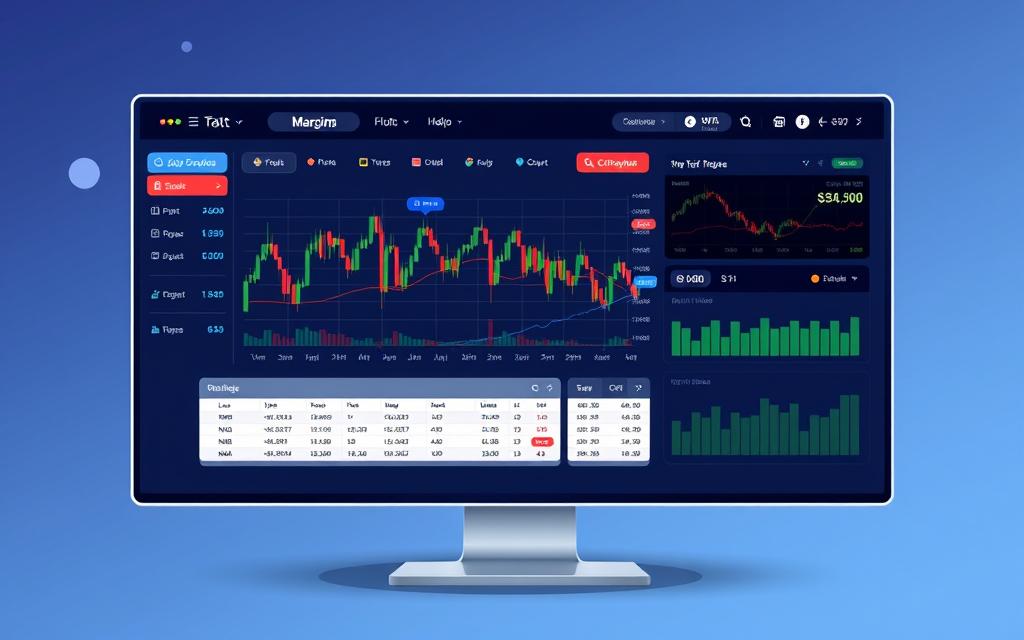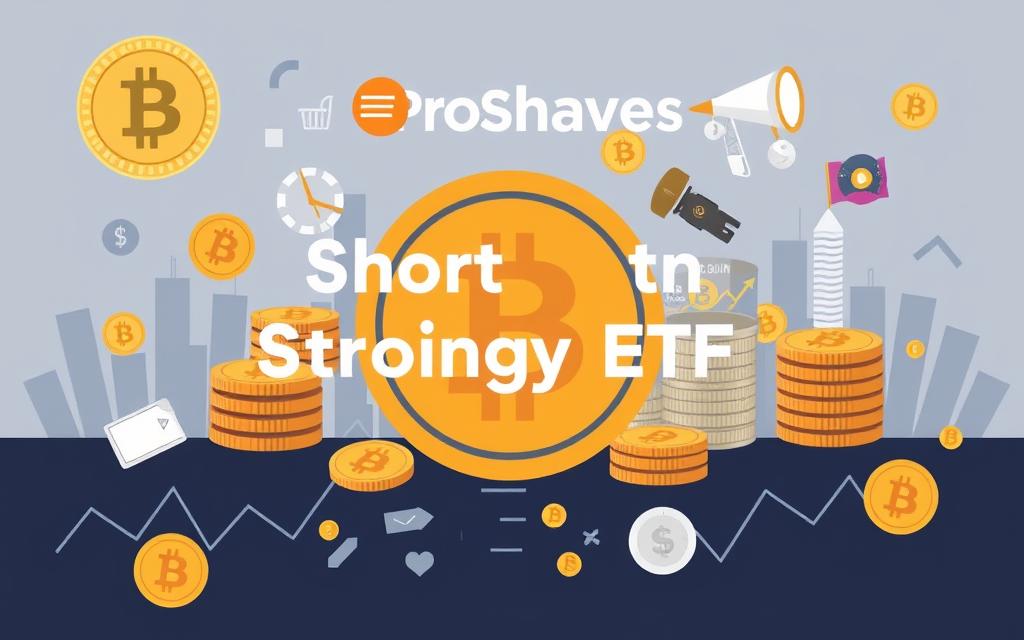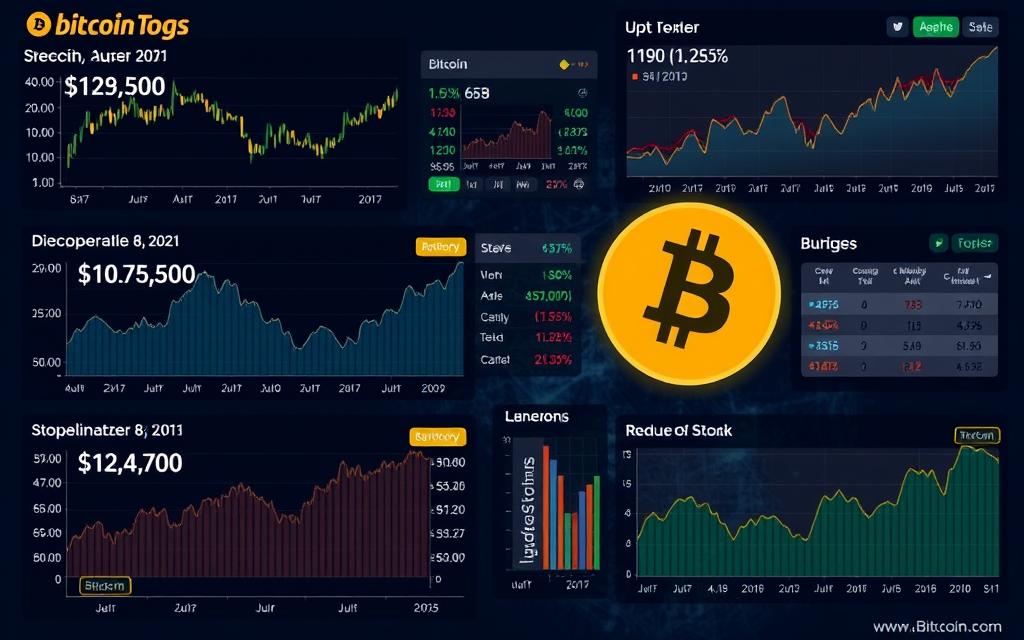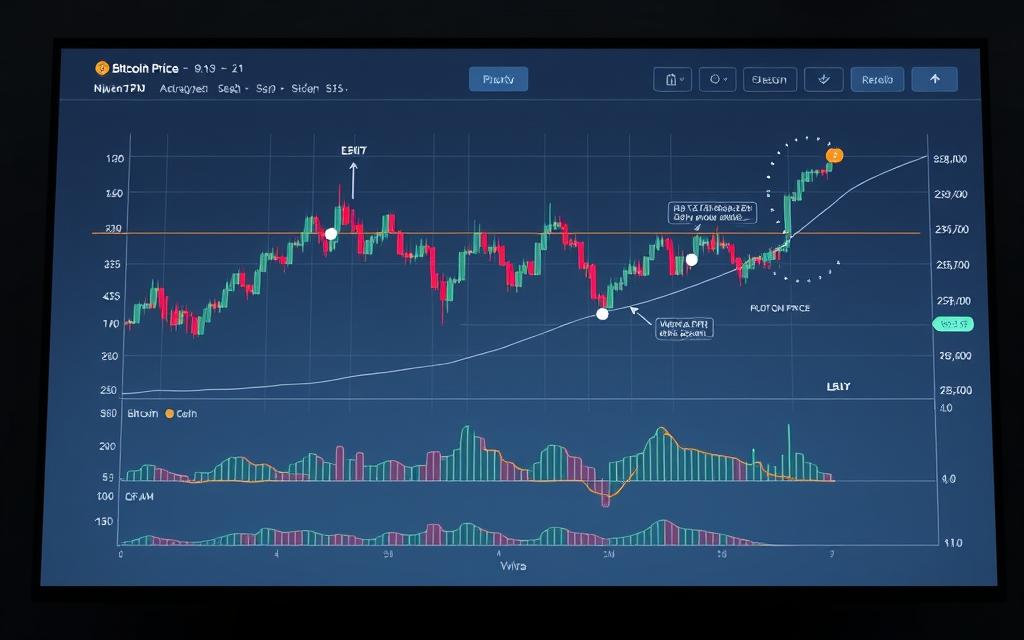Table of Contents
The Bitcoin market is known for its extreme volatility, with price swings that can be both significant and unpredictable. In recent years, Bitcoin’s price has fluctuated wildly, reaching highs of over $19,000 and then dropping to around $7,000 in a matter of months. This volatility creates opportunities for traders to profit not only from price increases but also from price decreases through a strategy known as shorting.
Traders can attempt to take advantage of Bitcoin’s volatile nature by engaging in trading activities. While many investors focus on buying Bitcoin with the expectation that its value will rise, shorting allows traders to potentially profit when Bitcoin’s price falls. For those considering this high-risk trading strategy, understanding the fundamentals is essential. For more information on trading strategies, you can refer to our comprehensive guide on trading cryptocurrency CFDs.
What Is Bitcoin Shorting?
When traders short Bitcoin, they aim to sell high and buy low, contrary to the traditional buy low, sell high approach. This strategy involves selling Bitcoin at a high price with the intention of buying it back at a lower price to realize a profit.
Understanding Short Selling in Cryptocurrency Markets
Short selling Bitcoin involves borrowing Bitcoin at its current price, immediately selling it, and then repurchasing it later at what you hope will be a lower price to return to the lender while keeping the difference as profit. Understanding the mechanics of short selling in cryptocurrency markets requires grasping how borrowing works on exchanges and the obligations that come with opening a short position.
Long vs. Short Positions Explained
Long positions in Bitcoin involve owning the asset with the expectation that its price will increase, while short positions involve betting against Bitcoin’s price with the expectation that it will decrease. The key difference between long and short positions lies in the risk profile – long positions have limited downside (Bitcoin can’t go below zero) but unlimited upside, while short positions have limited upside but theoretically unlimited downside if Bitcoin’s price rises dramatically.
Can You Short Bitcoin? Methods and Platforms

Traders looking to short Bitcoin have several options at their disposal, including exchanges and leveraged trading providers. Shorting Bitcoin involves selling the cryptocurrency with the expectation of buying it back later at a lower price to realize a profit. This strategy can be complex and varies significantly depending on the platform or method used.
Bitcoin Exchanges for Short Selling
Bitcoin exchanges like Kraken, Bitfinex, and BitMEX provide direct access to short selling by allowing traders to borrow Bitcoin, sell it immediately, and then repurchase it later at what they hope will be a lower price. These exchanges offer a straightforward way to short Bitcoin, but they require careful management of margin calls and potential liquidation risks.
Leveraged Trading Providers
Leveraged trading providers offer products such as Contracts for Difference (CFDs) and spread betting that enable traders to short Bitcoin without actually owning the underlying asset. This can potentially amplify returns through leverage, but it also increases the risk of significant losses. Traders should carefully consider their risk tolerance before using these products.
Derivatives Markets
Derivatives markets, including futures and options exchanges like the Chicago Mercantile Exchange (CME), provide standardized contracts that allow traders to take short positions on Bitcoin with varying expiration dates and contract specifications. These markets offer a regulated environment for shorting Bitcoin, which can be appealing to traders seeking transparency and compliance.
When choosing a platform for shorting Bitcoin, traders should consider factors such as fees, available leverage, security measures, regulatory compliance, and the platform’s track record in the cryptocurrency market. By carefully evaluating these factors, traders can select the most appropriate platform for their shorting strategy.
8 Ways to Short Bitcoin
There are several ways to short Bitcoin, catering to different trading preferences and risk tolerance. Traders can choose from a variety of financial instruments and platforms to bet against Bitcoin’s price.
Margin Trading
Margin trading allows investors to borrow funds to increase their trading position size, enabling them to short Bitcoin with leverage ratios like 2:1, 5:1, or even 10:1. This amplifies both potential profits and losses.

Futures Contracts
Futures contracts provide a standardized way to short Bitcoin by agreeing to sell Bitcoin at a predetermined price on a specific future date. This method is popular among traders who want to hedge or speculate.

Options Contracts
Options contracts offer more flexibility than futures by giving traders the right, but not the obligation, to sell Bitcoin at a specific price. This limits potential losses to the premium paid for the option.

Inverse ETFs
Inverse ETFs like ProShares Short Bitcoin Strategy ETF (BITI) allow traders to gain exposure to shorting Bitcoin through traditional brokerage accounts. This method is convenient for those who prefer not to directly deal with cryptocurrency exchanges.

Short Selling Bitcoin Assets
Direct short selling of Bitcoin assets involves borrowing Bitcoin, selling it immediately, and repurchasing it later at a hopefully lower price to return to the lender. The difference is kept as profit.
Bitcoin-Related Stocks
Shorting Bitcoin-related stocks such as MicroStrategy, Marathon Digital Holdings, or Riot Platforms provides an indirect way to bet against Bitcoin’s price. These companies have significant Bitcoin exposure.

Prediction Markets
Prediction markets offer another avenue for shorting Bitcoin by allowing traders to speculate on future price movements. These platforms are designed for event-based trading.
Contracts for Difference (CFDs)
CFDs enable traders to speculate on Bitcoin price movements without owning the underlying asset. Profits or losses are based on the difference between opening and closing prices.

Risks of Shorting Bitcoin
Shorting Bitcoin is a high-risk strategy that can result in significant financial losses if not managed properly. The process involves borrowing Bitcoin, selling it at the current market price, and then buying it back at a later time to return to the lender. If the price drops, the short seller profits from the difference. However, if the price rises, the short seller incurs losses.
Unlimited Loss Potential
One of the primary risks of shorting Bitcoin is the potential for unlimited losses. Since there’s no cap on how high the price of Bitcoin can rise, the potential losses for a short seller are theoretically unlimited. In contrast, the potential profit is capped because Bitcoin’s price cannot fall below zero.
Volatility Challenges
Bitcoin’s price is notoriously volatile, presenting significant challenges for short sellers. Rapid and unpredictable price movements can quickly turn a profitable position into a substantial loss. This volatility means that short sellers must be prepared for the possibility of significant losses.

Short Squeeze Explained
A short squeeze occurs when Bitcoin’s price rises rapidly, forcing short sellers to buy back their borrowed Bitcoin to limit their losses. This creates additional buying pressure, which can drive prices even higher in a vicious cycle. Short sellers must be aware of this risk and manage their positions accordingly.
For more information on how to short Bitcoin, you can visit this guide. Understanding the risks and strategies involved in shorting Bitcoin is crucial for making informed investment decisions.
| Risk Factor | Description | Impact on Short Sellers |
|---|---|---|
| Unlimited Loss Potential | No cap on Bitcoin’s price rise | Theoretically unlimited losses |
| Volatility | Rapid and unpredictable price movements | Potential for significant losses |
| Short Squeeze | Rapid price rise forcing buyback | Additional buying pressure driving prices higher |
“The cryptocurrency market is known for its volatility, and shorting Bitcoin requires a deep understanding of these risks.”
Step-by-Step Guide to Shorting Bitcoin
To successfully short Bitcoin, follow a structured approach that involves setting up your trading environment, conducting thorough market analysis, implementing robust risk management, and effectively executing and monitoring your short position.
Setting Up Your Trading Account
The first step in shorting Bitcoin is to set up a trading account on a platform that offers shorting capabilities, such as a cryptocurrency exchange with margin trading or a derivatives platform. When choosing a platform, consider factors like fees, leverage options, and the user interface. Ensure that the platform is reputable and secure to protect your investments.
Market Analysis and Entry Points
Conducting thorough market analysis is crucial to identify potential entry points for your short position. Utilize both technical indicators like moving averages, MACD, or Bollinger Bands, and fundamental analysis to gauge market sentiment and potential price movements. This comprehensive analysis will help you make informed decisions about when to enter a short position.
Implementing Risk Management
Implementing robust risk management strategies is essential before executing your trade. This includes setting stop-loss orders to limit potential losses and take-profit levels to secure gains when your price targets are reached. Effective risk management ensures that your trading process remains structured and consistent, minimizing potential downsides.
Executing and Monitoring Your Short Position
When executing your short position, start with a smaller position size until you gain experience. Consider using a test trade or demo account to practice your strategy without risking real capital. Continuously monitor your short position and the broader market conditions, being prepared to adjust your strategy or exit the position if market sentiment or technical indicators suggest a potential price reversal.
- Begin by selecting and setting up an appropriate trading account on a platform that offers shorting capabilities.
- Conduct thorough market analysis to identify potential entry points for your short position.
- Implement robust risk management strategies before executing your trade.
- Start with a smaller position size when executing your short position and continuously monitor market conditions.
Shorting Strategies for Bitcoin
Effective shorting strategies for Bitcoin require a combination of technical analysis, market understanding, and risk management. Traders who follow a strategy based upon technical analysis review historical BTC price charts by observing past trends and using technical indicators.
Technical Analysis Approaches
Technical analysis approaches for shorting Bitcoin include using moving averages (SMA, EMA), momentum indicators (RSI, MACD), and volatility indicators (Bollinger Bands) to identify potential downtrends and overbought conditions. Chart pattern recognition, such as identifying head and shoulders, double tops, or bearish flags, can provide traders with visual cues for potential shorting opportunities as Bitcoin’s price forms recognizable reversal patterns.

Fundamental Analysis Considerations
Fundamental analysis considerations for shorting Bitcoin include monitoring regulatory developments, network metrics, mining difficulty adjustments, and broader macroeconomic factors that might negatively impact Bitcoin’s price. Sentiment analysis, including monitoring the Fear and Greed Index, social media trends, and institutional positioning, can help traders gauge market extremes where shorting might be profitable as euphoria potentially gives way to correction.
| Analysis Type | Tools/Indicators | Market Insights |
|---|---|---|
| Technical Analysis | Moving Averages, RSI, MACD, Bollinger Bands | Identifies trends, overbought/oversold conditions |
| Fundamental Analysis | Regulatory news, network metrics, mining difficulty | Assesses potential impact on Bitcoin’s price |
| Sentiment Analysis | Fear and Greed Index, social media, institutional positioning | Gauges market sentiment and potential reversals |
Costs and Considerations When Shorting Bitcoin
When considering shorting Bitcoin, it’s crucial to understand the various costs involved. Shorting Bitcoin can be a complex process, involving multiple expenses that can impact the profitability of your trading strategy.
Transaction and Platform Fees
Transaction and platform fees vary widely across different exchanges and trading platforms. Some exchanges charge flat fees, while others use maker-taker fee structures that offer discounts for providing liquidity to the market. For instance, when trading Bitcoin futures, you may encounter different fee structures compared to spot markets.
Borrowing Costs and Interest Rates
Borrowing costs for short selling Bitcoin can be substantial, especially during bull markets when fewer investors are willing to lend their Bitcoin. This leads to higher interest rates that accrue daily and can erode potential profits. Traders must consider these costs when using leverage for short selling.
- Shorting Bitcoin involves various costs, including transaction fees and borrowing costs.
- Transaction fees vary across exchanges and can impact profitability.
- Borrowing costs can be high, especially during bull markets.

Conclusion
Shorting Bitcoin is a high-risk, high-reward endeavor that requires a deep understanding of the cryptocurrency market. To profit from downward price movements, traders must be aware of the various methods, including margin trading and futures contracts, and their associated risks. Effective risk management is crucial to mitigate potential losses. By understanding the different shorting strategies and being mindful of bitcoin price volatility, traders can make informed decisions. Ultimately, successful shorting of Bitcoin demands a well-thought-out strategy and continuous education.
FAQ
What is the difference between a long position and a short position in trading?
A long position involves buying an asset with the expectation that its value will rise, while a short position involves selling an asset with the expectation that its value will fall.
How do I short sell Bitcoin using margin trading?
To short sell Bitcoin using margin trading, you borrow funds from a broker to sell Bitcoin at the current market price, with the obligation to buy it back later at a hopefully lower price to return the borrowed amount and keep the profit.
What are the risks associated with shorting Bitcoin?
The risks include unlimited loss potential if the price rises instead of falls, volatility challenges that can lead to significant losses, and the possibility of a short squeeze where the price surges, forcing you to cover your short position at a loss.
What are futures contracts and how are they used for shorting Bitcoin?
Futures contracts are agreements to buy or sell an asset at a future date at a predetermined price. To short Bitcoin using futures, you sell a futures contract, speculating that the price will be lower at the contract’s expiration date.
How do I manage risk when shorting Bitcoin?
Risk management involves setting stop-loss orders to limit potential losses, closely monitoring market movements, and adjusting your position size according to your risk tolerance and market conditions.
What are the costs involved in shorting Bitcoin?
The costs include transaction fees, platform fees, borrowing costs for the asset being shorted, and interest rates on the borrowed amount.
Can I short Bitcoin using options contracts?
Yes, you can short Bitcoin using options contracts by buying put options, which give you the right to sell Bitcoin at a specified price. If the price falls, you can exercise the put option to sell at the higher strike price and buy back at the lower market price, profiting from the difference.
What is a short squeeze and how does it affect short sellers?
A short squeeze occurs when the price of Bitcoin unexpectedly rises, forcing short sellers to cover their positions by buying back the asset, which in turn drives the price even higher, exacerbating losses for short sellers.









